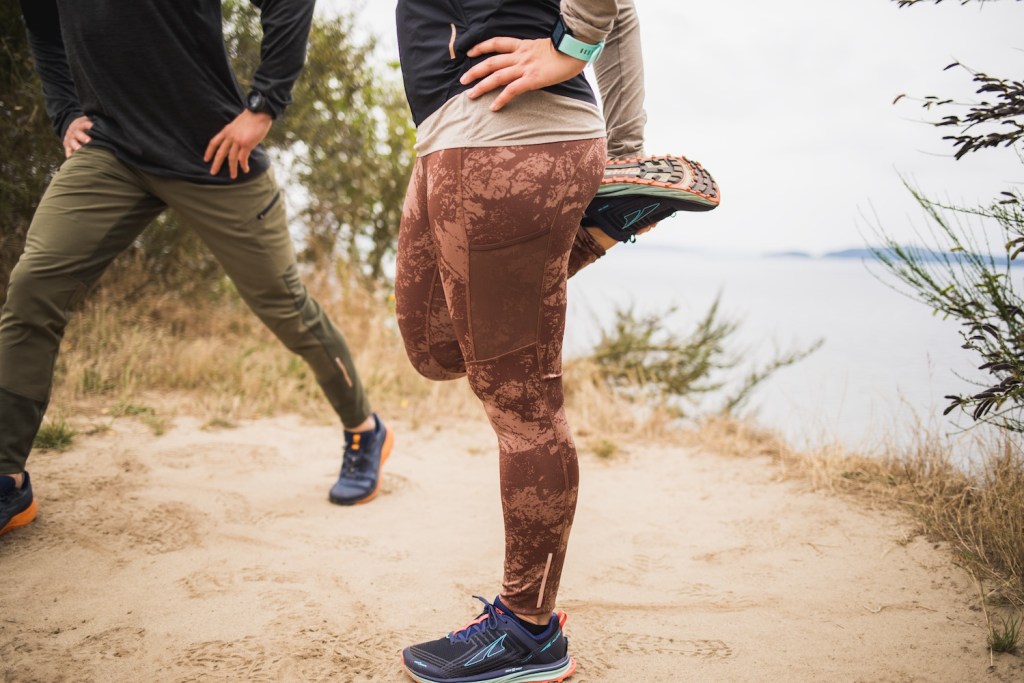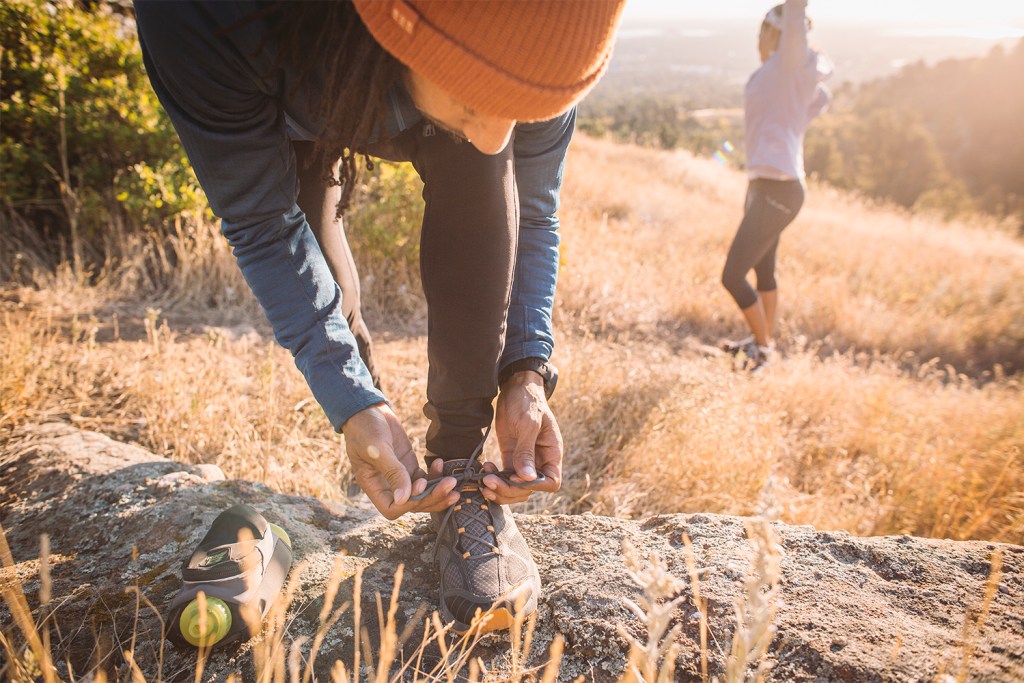When setting goals for the year, it’s important to remember that the key to success in New Year’s resolutions is to start small. Explore a new part of your neighborhood, train for a race you’ve been eyeing or invest in fresh running gear that’ll motivate you to get out the door. Pick a few goals that are attainable and won’t take all year to complete. Achievable victories–from trying run/walk intervals to getting that 10 minutes of core work done once a week–will pay off in the long run.
Whether you’re totally new to running or a seasoned marathoner, here are a few goals to get you sprinting into 2023.

Try running someplace new—a trail you’ve never been on before or a neighborhood of a city you’ve never explored.
Explore a new trail
It’s easy to get bogged down by the repetition of the same loops you’ve been running year after year. Switch things up and search for a trail network you haven’t visited before or try running with someone who knows different routes. “Discovering new trails keeps me motivated because I’m excited to find out what’s around every corner,” says Kelly Halpin, a La Sportiva trail-running athlete. “I love exploring and being present in a different area.”
If you live in an urban area, branch out by jogging through a neighborhood you haven’t spent much time in.
Train for a race
Training for an event can be a great motivator to stay consistent. Sign up for a 5K that benefits a local charity or choose a race in a city you’ve always wanted to visit. Having a goal in mind while she’s running helps Halpin keep on track. “I like to envision whatever big feat I’m trying to accomplish while I’m doing tempo workouts and training runs,” she says. “I believe it sets you up for success.”

Start and end your run with some dynamic stretching like lunges or leg swings, and your body will thank you.
Stretch more
Anyone else guilty of rushing through a stretching routine or skipping it all together? Try to take just 10 minutes to do some dynamic stretching–meaning you go through the full range of motion a few times rather than holding the stretch–before running out the door. Gianna Risoli, a physical therapist in Jackson, Wyoming, said a few minutes of dynamic stretching can make a big difference in preventing injuries. For runners, Risoli recommended movements that focus on the calf and the front of the thigh, like heel raises and lunges. “Lack of mobility in those regions can increase a runner’s risk of injury,” she said. After your run, static stretching can temporarily relieve soreness. Risoli recommended a standing calf stretch and standing quad stretch to start, then a half-kneeling quad and hip flexor stretch. “Foam rolling as well as a dynamic warmup can be beneficial,” she added.
Join a running group
If you want to meet training partners, discover trails and stay accountable, a running group could help. Most groups host weekly runs at all levels, ranging from those training for a 5K to ultradistance runs. The Meetup website is an easy way to search for groups in your area, and a good resource if you’re traveling and want to join some local runners.
Can’t find a club nearby? Start your own. Enlist a few friends, hang posters around town and set a weekly time and place to meet. Developing a community you can rely on will keep running fresh and exciting, with the added bonus of catching up with friends old and new.

Those old shoes you love have put in the miles; now it’s time you treated your feet to a fresh pair.
Buy new running shoes (finally)
A new pair of running shoes might be the extra boost you need to push your running to the next stage, or just keep doing it consistently. In general, it’s a good idea to replace running shoes after 300 to 500 miles, when the midsoles can stop absorbing shock as efficiently. But different runners may see their shoes wear down at different stages, so check for excessive wear-and-tear.
Buying a new pair of running shoes can feel overwhelming. When choosing a pair of shoes, think about the type of terrain you’ll be running on. If you plan to run on rugged trails, look for shoes with a heavy tread and lugged soles that will help with stability on uneven terrain. If you’ll be doing most of your running on asphalt or pavement, lighter shoes with extra cushioning are a good choice.
Bring someone new into running
Everything’s more fun with a buddy. Encourage a friend to get into running or volunteer with a program like Girls on the Run, a nonprofit that empowers young women all over the country by creating a running community and progressing up to run a 5K race. “It’s amazing to see the growth in the girls we coach,” said Katherine Fischer, a GOTR coach in Burlington, Vermont. “Helping empower them to be more confident in themselves and their abilities means a lot to me and motivates me as a runner.”
Take rest days
This may seem like the antithesis of setting a goal to run more, but recovery days will increase your longevity as a runner, helping you to stay healthy and avoid burnout. Risoli said that one of the biggest mistakes a runner can make is to not take the time to recover between sessions. “Recovery is just as, if not more, important that the actual training because it’s the time the body is remodeling and becoming stronger,” she said. “If you skip this step, your body keeps breaking down and could result in injury.”
And mix it up—cross-training does a body good. Running is such a linear, repetitive and high-impact activity, Risoli said it can be good to add in some lower-impact activities, too. “Biking, rowing or swimming are great ways to cross-train and continue to build endurance when you’re not running,” she said.
